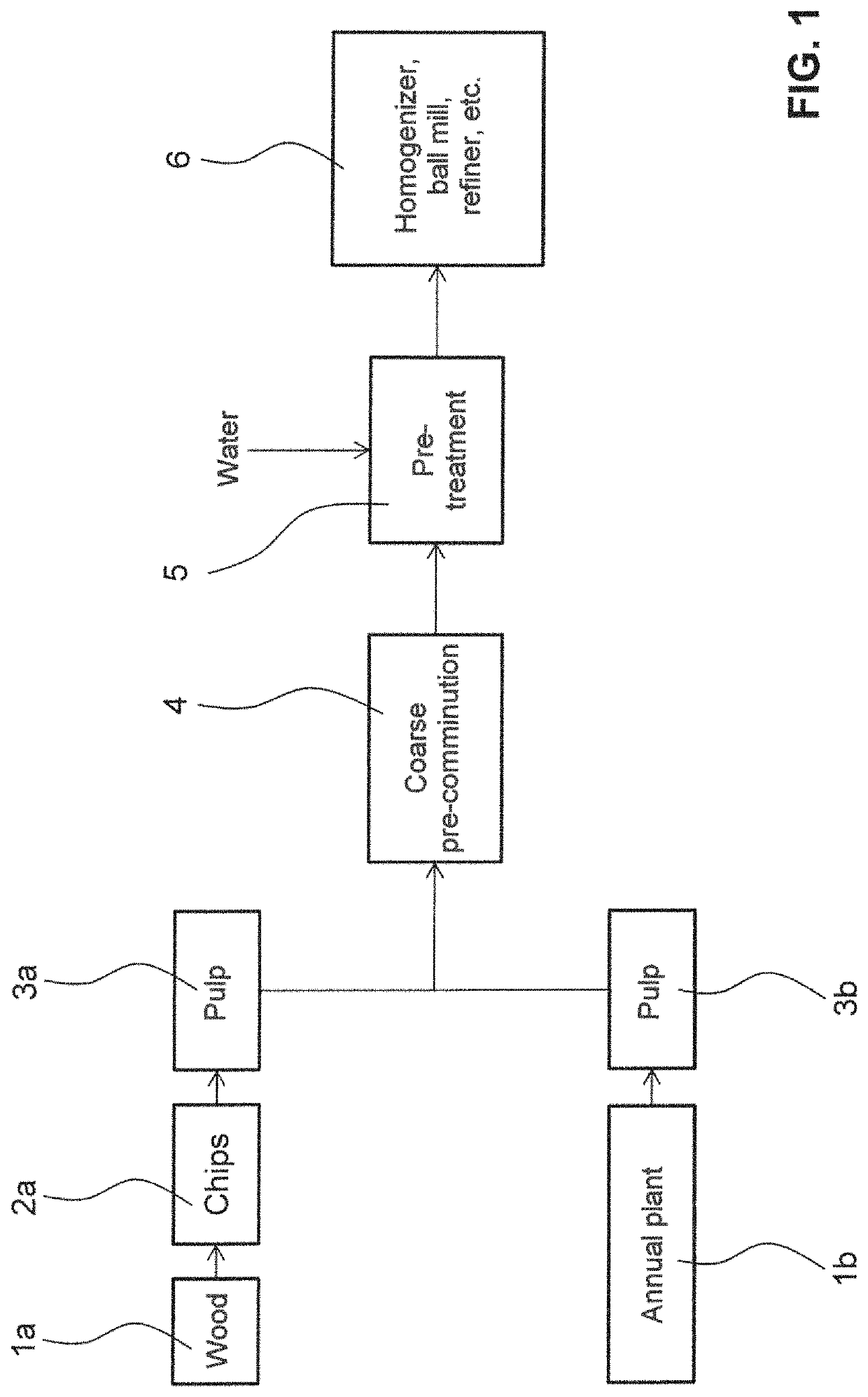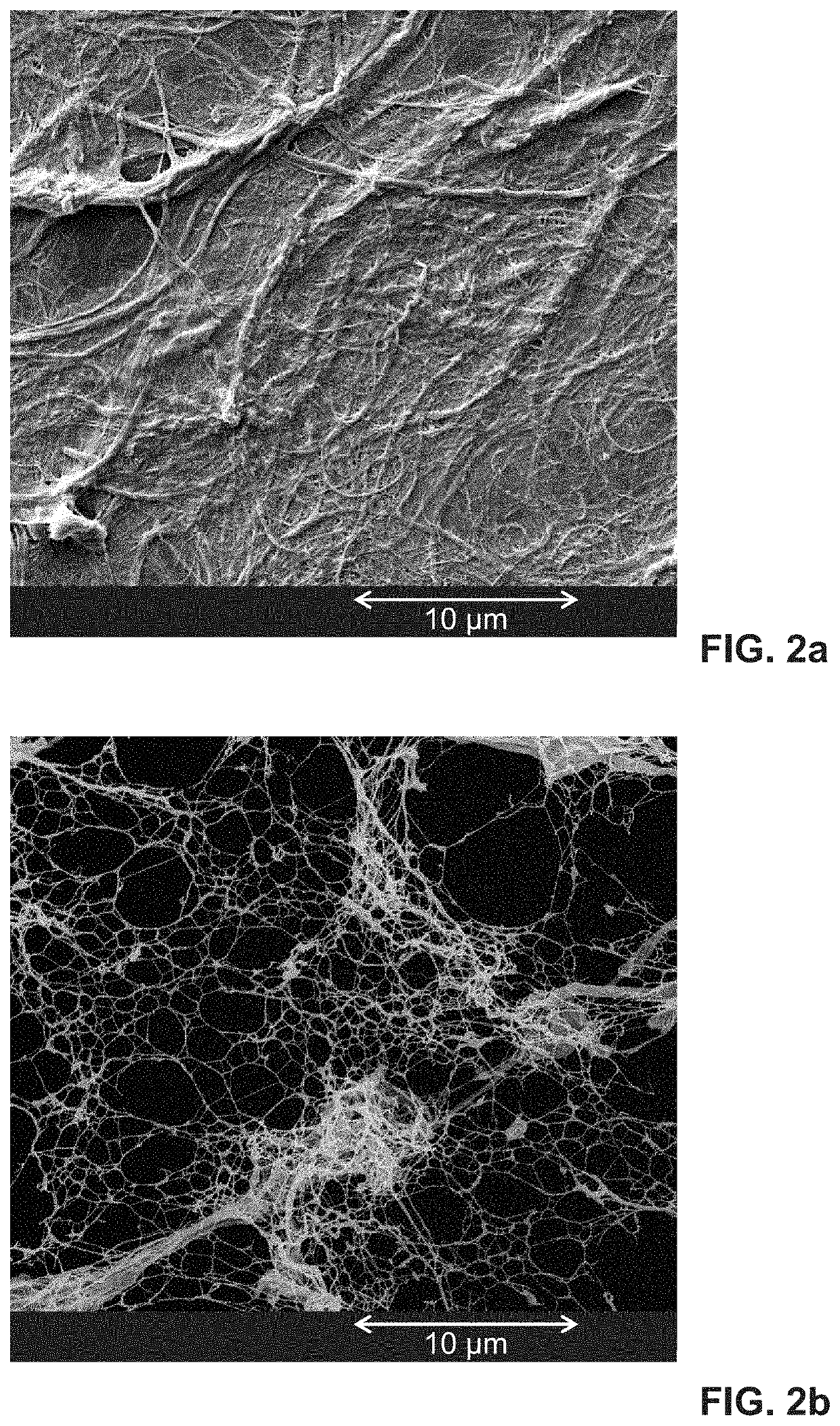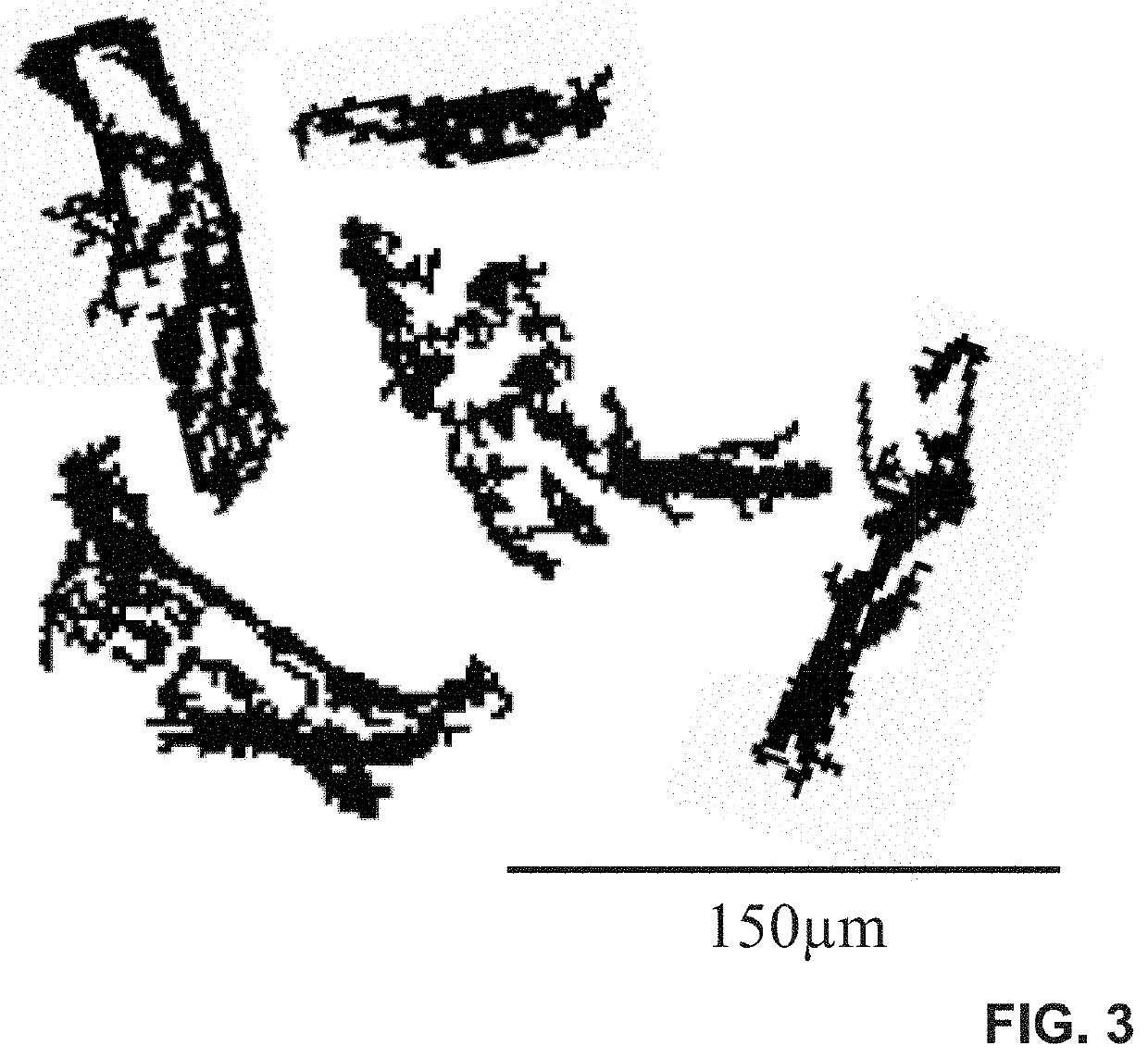Method for producing microscale and/or nanoscale fiber material
a technology of nano-scale fibers and fiber materials, applied in nanotechnology, paper/cardboard, nanotechnology, etc., can solve the problems of reducing the material affecting the quality of the material, etc., and achieves the effects of convenient storage, efficient absorption, and advantageous properties
- Summary
- Abstract
- Description
- Claims
- Application Information
AI Technical Summary
Benefits of technology
Problems solved by technology
Method used
Image
Examples
Embodiment Construction
[0094]FIG. 1 shows a flowchart which illustrates the individual method steps of a method according to the invention.
[0095]The original starting material used can be wood 1a or annual plants 1b or a combination thereof. The original starting material used for the production of the dry, pre-comminuted pulp or especially for the production of the pulp sheets used for the pre-comminution or of the flash-dried pulp can also be fruits, such as, for example, citrus fruits or apples, grain, such as, for example, wheat or corn, grass or fiber-containing vegetables, such as, for example, peas, pulses or carrots. The production of pulp from fruits, grain, grass or fiber-containing vegetables is known to a person skilled in the art.
[0096]The wood 1a or the annual plants 1b are processed to form pulp 3a or 3b according to a method known to a person skilled in the art. The pulp 3a or 3b is preferably pulp sheets or flash-dried pulp.
[0097]When using wood 1a as starting material, it is first commin...
PUM
| Property | Measurement | Unit |
|---|---|---|
| length | aaaaa | aaaaa |
| length | aaaaa | aaaaa |
| length | aaaaa | aaaaa |
Abstract
Description
Claims
Application Information
 Login to View More
Login to View More - R&D
- Intellectual Property
- Life Sciences
- Materials
- Tech Scout
- Unparalleled Data Quality
- Higher Quality Content
- 60% Fewer Hallucinations
Browse by: Latest US Patents, China's latest patents, Technical Efficacy Thesaurus, Application Domain, Technology Topic, Popular Technical Reports.
© 2025 PatSnap. All rights reserved.Legal|Privacy policy|Modern Slavery Act Transparency Statement|Sitemap|About US| Contact US: help@patsnap.com



